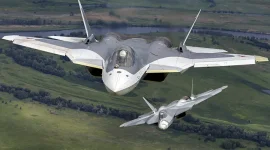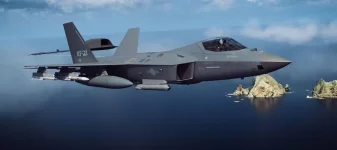- Views: 2K
- Replies: 22
In a significant strategic move aimed at securing a major Indian Air Force (IAF) contract and expanding its presence in the Asia-Pacific defence market, Brazilian aerospace manufacturer Embraer has proposed establishing a final assembly line for its C-390 Millennium transport aircraft in India.
This offer is contingent upon the company winning the IAF's ongoing tender for Medium Transport Aircraft (MTA).
The ambitious plan not only seeks to supply the 60 to 80 aircraft required by the IAF but also aims to position India as a crucial hub for exports, maintenance, repair, and overhaul (MRO), and training for the C-390 aircraft across the Asia-Pacific region.
If Embraer's bid is successful, the Indian Air Force would become the largest global operator of the C-390 Millennium, possessing more aircraft than all current customers combined, including the Brazilian Air Force.
The IAF's MTA tender was initiated to replace its ageing fleet of Antonov An-32 aircraft. The requirement is for a medium-lift tactical transport aircraft with a payload capacity ranging from 18 to 30 tons. The procurement of 60 to 80 such aircraft represents one of the most substantial military transport acquisition programs globally in recent times.
Embraer's C-390 is competing against established aircraft such as Lockheed Martin's C-130J Super Hercules and Airbus's A400M Atlas. The Brazilian company is promoting the C-390 as a versatile and cost-effective solution, well-suited to India’s diverse operational requirements, including capabilities for high-altitude missions and rapid deployment. The replacement of the An-32 fleet is considered critical for modernising the IAF's airlift capabilities.
This latest proposal builds upon an existing partnership. In February 2024, Embraer signed a Memorandum of Understanding (MoU) with Indian conglomerate Mahindra's Defence Systems wing to jointly pursue the MTA contract. This collaboration, officially announced at the Embassy of Brazil in New Delhi, underscores a commitment to local production under India’s ‘Make in India’ policy.
Embraer's early 2025 announcement to establish a final assembly line if it wins the tender takes this commitment a step further. The envisioned facility would not only cater to the IAF’s needs but also serve as a regional centre for new export sales, MRO services, and comprehensive training programs for countries in the Asia-Pacific.
Embraer's vision for India extends beyond the immediate aircraft sale. The company identifies India’s strategic geographic location, its developing aerospace ecosystem, and its growing defence ambitions as key factors that make it an ideal location for a C-390 regional hub.
"India has the potential to become a centre of excellence for the C-390 in the Asia-Pacific," an Embraer Defense & Security official stated recently. "A final assembly line here would support exports to regional allies, provide MRO services, and train aircrews and technicians, fostering a self-sustaining ecosystem."
The Asia-Pacific region, which includes several nations looking to modernise their air transport fleets such as Indonesia, Vietnam, and the Philippines, presents a significant, largely untapped market for the C-390. These countries are seeking modern yet affordable transport aircraft and could benefit from an Indian-based hub due to geographical proximity and potentially lower operational and support costs compared to hubs in the West or Brazil.
Furthermore, India's existing operational experience with other Embraer platforms, notably the ERJ-145 jet-based Netra Airborne Early Warning and Control (AEW&C) aircraft, provides a solid foundation of technical expertise and infrastructure.
The proposed Indian hub would also incorporate a training academy. This facility would leverage India’s skilled workforce to certify pilots, loadmasters, and maintenance personnel for both Indian and international C-390 operators.
An accompanying MRO facility is planned to ensure long-term aircraft availability and reduce operational costs for C-390 fleets across the region. Embraer has previously implemented similar successful support infrastructure models in Brazil and is reportedly exploring a comparable partnership in Saudi Arabia.


